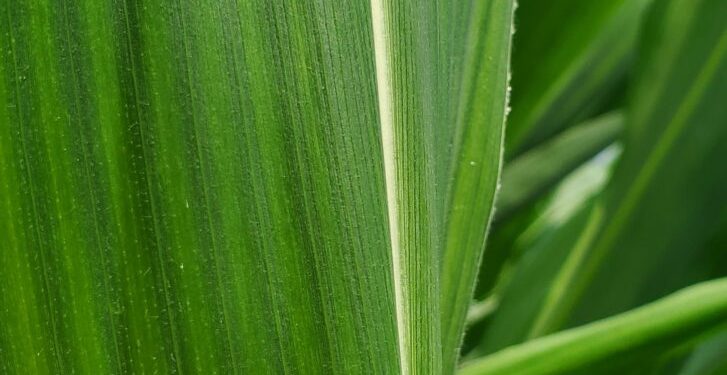Early Detection and Management Strategies for Corn Rootworm, Western Bean Cutworm, and European Corn Borer
With the growing season in full swing, it’s crucial for farmers to stay vigilant about pest management to ensure healthy crops and optimal yields. This article outlines the primary corn pests to monitor over the next month: Corn Rootworm, Western Bean Cutworm, and European Corn Borer. Understanding their life cycles and implementing timely management strategies can significantly mitigate the risks they pose.
Corn Rootworm (CRW)
Corn Rootworm (CRW) is emerging ahead of schedule this year, with adult beetles expected to appear within the next week. For those participating in the Corn Rootworm Trap Network, now is the time to set up sticky traps. These traps are essential for identifying fields with potential Bt-resistant CRW populations, especially in areas planted with CRW Bt hybrids. Monitoring for CRW adults will help predict next year’s rootworm injury risk in continuous corn production fields.
To determine high-risk fields, place four traps and check them after seven days. If each trap catches an average of 2 or more beetles per day (14 beetles per trap), the field is considered high risk. In fields planted with CRW Bt hybrids, this indicates a resistant population that should be reported for further testing. For fields without CRW Bt hybrids, consider soil-applied insecticides, planting CRW Bt hybrids, or rotating crops to avoid injury.
Western Bean Cutworm (WBC)
Western Bean Cutworm (WBC) moths have begun their flight, with traps catching low levels of moths. However, low early counts don’t necessarily mean low risk. Scouting should focus on early planted fields to check for egg masses. If 5% of the plants scouted have egg masses, insecticide applications are necessary. WBC larvae require at least a developing tassel to survive, so fields in later growth stages are more at risk. Monitor later planted fields closely during peak moth flight from late July to early August.
European Corn Borer (ECB)
With European Corn Borer (ECB) populations showing resistance to Bt corn, regular scouting for injury signs is critical. This includes looking for leaf or whorl feeding, frass, stalk tunneling, bent or broken stalks, and broken tassels. Fields showing ECB feeding injury in Bt corn should be reported for resistance testing. Shredding stalks during or after harvest can kill overwintering larvae, reducing future risks.
For detailed trapping instructions and updates, refer to resources such as Field Crop News and the Great Lakes and Maritimes Pest Monitoring Network.
Weather Summary: July 11 to July 17, 2024
Here is the weather data summary for various locations, providing insights into temperature fluctuations and precipitation which can influence pest activities.
| Location | Highest Temp (°C) | Lowest Temp (°C) | Rain for Week (mm) | Rain Since April 1st (mm) | GDD0C April 1st | GDD5C April 1st | CHU May 1st |
|---|---|---|---|---|---|---|---|
| HARROW | 29.2 | 17.2 | 10.2 | 318.7 | 1867 | 1330 | 1870 |
| RIDGETOWN | 29.0 | 14.7 | 44.1 | 431.5 | 1763 | 1230 | 1759 |
| SARNIA | 30.5 | 14.4 | 82.5 | 373.7 | 1744 | 1213 | 1713 |
| LONDON | 29.8 | 15.5 | 108.2 | 463.0 | 1736 | 1201 | 1740 |
| BRANTFORD | 29.7 | 15.7 | 89.0 | 389.8 | 1680 | 1149 | 1689 |
| WELLAND | 29.2 | 16.5 | 23.4 | 391.6 | 1742 | 1207 | 1768 |
| GODERICH | 27.9 | 13.9 | 21.0 | 261.5 | 1568 | 1041 | 1553 |
| ELORA | 27.9 | 13.8 | 39.6 | 341.9 | 1565 | 1042 | 1579 |
| MOUNT FOREST | 27.8 | 13.6 | 24.9 | 329.8 | 1550 | 1030 | 1564 |
| BARRIE | 28.2 | 14.3 | 10.4 | 496.7 | 1510 | 990 | 1537 |
| PETERBOROUGH | 29.6 | 13.6 | 29.5 | 346.6 | 1551 | 1027 | 1551 |
| KEMPTVILLE | 31.0 | 17.0 | 13.3 | 375.2 | 1637 | 1114 | 1683 |
| SUDBURY | 29.0 | 13.0 | 9.8 | 378.4 | 1394 | 897 | 1440 |
| EARLTON | 30.4 | 11.0 | 7.3 | 335.3 | 1379 | 889 | 1428 |
| SAULT STE MARIE | 26.4 | 11.3 | 10.3 | 374.3 | 1269 | 758 | 1237 |
| THUNDER BAY | 31.6 | 7.6 | 31.0 | 277.5 | 1176 | 687 | 1140 |
| FORT FRANCES | 30.4 | 7.3 | 28.9 | 338.8 | 1238 | 738 | 1231 |





